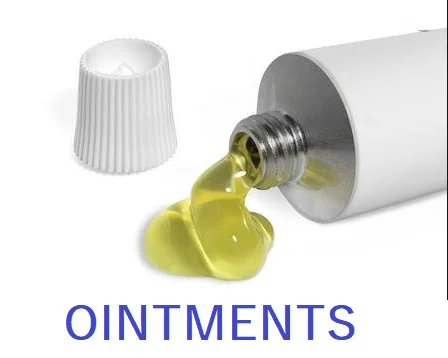Beclomethasone Dipropionate , Clotrimazole Ointment
PURPOSE: This Master formula record (MFR) is written to describe the formulae, manufacturing procedure, specifications, packing details of dosage form.
SCOPE: This MFR is performed and is applied during the manufacturing of dosage form.
RESPONSIBILITY / ACCOUNTABILITY: It is the responsibility of Manufacturing Chemist to follow and adhere to this SOP. The Production Pharmacist, QC/QA Manager are accountable for the strict adherence to the master formula.
COPY ISSUED TO:
Master Copy: Manager Quality Assurance
Copy No. 1: Production Pharmacist
Copy No. 2: Manager Quality Control
Copy No. 3: Ointment Section
| PRODUCT NAME: Beclomethasone Dipropionate , Clotrimazole Ointment | BATCH SIZE: 200 KG |
| PRODUCT REFERENCE CODE: | UNIT SIZE: 15 g |
| GENERIC NAME: N.A. | PACK SIZE: 24 ´ 12 ´ 10g |
| DOSAGE FORM: OINTMENT | STRENGTH: N.A. |
| DEPARTMENT: OINTMENT DEPARTMENT | EXPIRY DATE: AFTER 24 MONTHS FROM THE DATE OF MANUFACTURING |
COMPOSITION:
| Beclomethasone Dipropionate | B. P. | 0.025% w/w |
| Clotrimazole | B. P. | 1.0% w/w |
| Neomycin Sulphate | B. P. | 0.5% w/w |
| Chlorocresol | B.P. | 0.1% w/w |
EQUIPMENTS TO BE USED:
| SR. NO. | NAME OF EQUIPMENT | ASSEMBLING AS PER SOP NO. | CLEANING AS PER SOP NO. |
| 1 | Wax Vessel | ||
| 2 | Water Vessel | ||
| 3 | Mixing Vessel | ||
| 4 | Colloidal Mill | ||
| 5 | Storage Container-I (500 Kg) | ||
| 6 | Semiautomatic Aluminium Tube Filling & Crimping Machine |
RAW MATERIALS: –
| S.NO. | INGREDIENTS | STD | Theoretical Quantity Req. | Overages % | Total Quantity Used |
| 1 | BECLOMETHASONE DI PROPIONATE | B.P. | 50.000 | 4.00 | 52.000 GM |
| 2 | CM – 1000 | I.P. | 6.667 | 6.667 KG | |
| 3 | CETOCETYL ALCOHOL | I.P. | 20.000 | 20.000 KG | |
| 4 | CLOTRIMAZOLE | B.P. | 2.000 | 5.00 | 2.100 KG |
| 5 | LIQUID PARAFFIN LIGHT | I.P. | 10.000 | 10.000 KG | |
| 6 | NEOMYCIN SULPHATE | B.P. | 1.000 | 10.00 | 1.100 KG |
| 7 | P.C.M.C | I.P. | 0.200 | 0.200 KG | |
| 8 | SODIUM META BI SULPHITE | I.P. | 0.680 | 0.680 KG | |
| 9 | WHITE PETROLEUM JELLY | I.P. | 32.000 | 32.000 KG | |
| 10 | CHLOROCRESOL | B.P. | 0.200 | 10.00 | 0.220 KG |
PACKING MATERIALS:-
| S.NO. | NAME OF THE MATERIAL | THEORETICAL QUANTITY REQ. | FOR RECORD | TOTAL QUANTITY USED |
| 1 | ADHESIVE TAPE ROLL | 1.000 | 1.000 NOS | |
| 2 | CELLO TAPE | 3.000 | 3.000 NOS | |
| 3 | TUBES | 13333.000 | 13333.000 NOS | |
| 4 | UNIT CARTON | 13333.000 | 3.000 | 13336.000 NOS |
| 5 | OUTER CARTON | 1111.083 | 2.000 | 1113.083 NOS |
| 6 | CORRUGATED BOX | 46.295 | 46.295 NOS |
MANUFACTURING SPECIFICATIONS:
Average fill of each Tube is 15 grams.
Weight variation limit allowed in each filled Tube is + 200 mg.
Melt the waxes at the maintained temperature 70˚ C.
Use accurate weight quantity of water to make up the final weight of cream.
Colloid the cream till uniform particle size is achieved.
The temperature of primary area should not exceed 30˚C.
Yield:
Theoretical Yield is 13333 Tubes.
Expected Practical Yield is 13333 + 2% Tube.
Packing Details:
Transfer the cream from storage tank to Semiautomatic Aluminium Tube Filling & Crimping Machine and start filling and then Crimping of the tubes as per its SOP.
Pack the filled tubes in unit carton.
Pack such 12 tubes in each outer carton.
Seal the outer carton with cello tape.
Pack the 24 outer cartons in specified corrugated box to give a pack size of 24 x 12 x 10 Tubes.
Seal the each corrugated box with adhesive tape and label it properly by affixing the specified label.
MANUFACTURING PROCESS:
Melt 6.667 kg of Ceto Macrogol- 1000, 20 kg of Cetocetyl Alcohol, 8.0 kg of Liquid Paraffin Light and 32 kg White Petroleum Jelly in a Steam Heat Wax Melting Vessel by operating it as per its SOP at temperature 70˚
Heat 128.0kg of water in water vessel as its SOP.
Filter and transfer the melted base through Stainless Steel Sieve no. 100 to the mixing vessel and start the machine as per its SOP.
Mix 2.1kg of Clotrimazole in 20.0 kg of water gradually and pass it through Colloid Mill to achieve the slurry of uniform particle size by operating it as per its SOP and transfer it to the bulk batch.
Dissolve 0.200 kg of P.C.M.C. in 2 kg of water and transfer it to the bulk batch.
Dissolve 0.110 kg of CHLOROCRESOL in 2 kg of water and transfer it to the bulk batch.
Dissolve 0.680 kg of Sodium Metabisulphite in 4 kg of water and transfer it to the bulk batch.
Slowly add rest of water to the bulk batch leaving 10kg of water.
Cool the cream to the room temperature by running the water in the jacket of mixing vessel.
Triturate and dissolve 52.00 gm of Beclomethasone Di-Propionate in 2 kg of Liquid Paraffin Light in a mortar–pestle and add to the bulk batch.
Dissolve 1.10 kg of Neomycin Sulphate in 10 kg of water and add to the bulk batch.
Mix the whole batch for 90 minutes while running the water in the jacket.
Send the sample to Quality Control Department for bulk testing.
After approval from Quality Control Department, transfer the cream to the storage tank.
IN-PROCESS CONTROLS:
The following in-process controls should be maintained during the processing:
Check Raw materials used for manufacturing purpose are all approved materials and have ‘Released’ labels fixed on it.
All weighed Raw materials should be counter-checked by Manufacturing Chemist. If any discrepancy is noticed, it should be immediately brought to the notice of Production Pharmacist and QC/QA Manager.
Physical characteristics of Raw material like colour, odour, and consistency are checked before compounding.
The total weight of bulk ointment / cream should be checked in the presence of Manufacturing Chemist and record the same in Batch Manufacturing Record.
pH of the bulk should be checked and it should be with in specified limits.
Bulk sample should be sent for analysis to Quality Control Department before starting the filling and sealing stage.
While the tube filling operation is on, the Manufacturing Chemist should check weight of net filled quantity per tube at the interval of 30 minutes by checking the tare weight of empty tube and gross weight of the filled tube. Record for the same should be kept in Batch Manufacturing Record.
The ‘fill weight’ of ointment or cream per tube should not be less than the labelled amount.
Limit for Weight Variation: Weight claimed on the carton + 200 mg
Manufacturing Chemist will also ensure that the crimping of the filled Aluminium tubes, sealing of plastic tubes is appropriate and embossing of batch number and manufacturing date is conspicuous. Also the quality of embossing will be controlled by adjusting pressure exerted by the jaws, so that pinholes are not developed on the embossed letters / numbers.
The inner and outer cartons should be checked thoroughly for proper batch coding.
Manufacturing Chemist and Production Pharmacist should randomly check that the correct no. of inner cartons are being packed in each outer cartons and also the correct number of outer cartons in each shipper is exactly the same as that shown in proof.
IN-PROCESS CONTROLS:
The following in-process controls should be maintained during the processing:
Check Raw materials used for manufacturing purpose are all approved materials and have ‘Released’ labels fixed on it.
All weighed Raw materials should be counter-checked by Manufacturing Chemist. If any discrepancy is noticed, it should be immediately brought to the notice of Production Pharmacist and QC/QA Manager.
Physical characteristics of Raw material like colour, odour, and consistency are checked before compounding.
The total weight of bulk ointment / cream should be checked in the presence of Manufacturing Chemist and record the same in Batch Manufacturing Record.
pH of the bulk should be checked and it should be with in specified limits.
Bulk sample should be sent for analysis to Quality Control Department before starting the filling and sealing stage.
While the tube filling operation is on, the Manufacturing Chemist should check weight of net filled quantity per tube at the interval of 30 minutes by checking the tare weight of empty tube and gross weight of the filled tube. Record for the same should be kept in Batch Manufacturing Record.
The ‘fill weight’ of ointment or cream per tube should not be less than the labelled amount.
Limit for Weight Variation: Weight claimed on the carton + 200 mg
Manufacturing Chemist will also ensure that the crimping of the filled Aluminium tubes, sealing of plastic tubes is appropriate and embossing of batch number and manufacturing date is conspicuous. Also the quality of embossing will be controlled by adjusting pressure exerted by the jaws, so that pinholes are not developed on the embossed letters / numbers.
The inner and outer cartons should be checked thoroughly for proper batch coding.
Manufacturing Chemist and Production Pharmacist should randomly check that the correct no. of inner cartons are being packed in each outer cartons and also the correct number of outer cartons in each shipper is exactly the same as that shown in proof.
Intimation should be sent to Quality Control Department for finished product sampling and testing.
After the completion of filling and packaging, the coded cartons should be accounted for and rejected printed material should be destroyed in the presence of QC/QA Manager. Maintain the destruction of the same in the Batch Manufacturing Record.
It will be ensure that filling or packaging equipment has been properly cleaned.
Filling or packaging of next product should be commenced only after getting the ‘Line Clearance’ of the previous product, from the IPQA.
OTHER RELATED POST: Choline Salicylate Ointment


